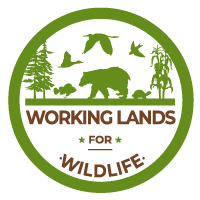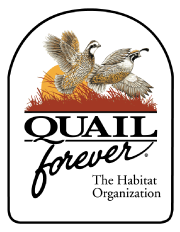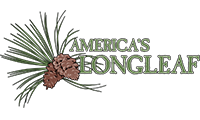Framework
Why Grasslands and Savannas?
The grassland and savanna regions are some of the most valuable and endangered landscapes in the United States. Their expanse includes the number one crop production states for corn, wheat, sorghum, soybeans, peanuts and cotton. They also hold six of the top ten forest production states, as well as the Fescue Belt– which has the highest concentration of livestock producers and livestock in the country. Southeastern grasslands are the most diverse biologically in the U.S. but also the most endangered, with up to 90% of the land in degraded condition or already lost.
Working Lands For Wildlife Approach
This framework assembled by Working Lands for Wildlife identifies the pressing threats for grasslands and savannahs, and presents concrete action plans to manage and protect these landscapes. WLWF generates these plans with a commitment to finding solutions that are mutually beneficial to the land itself, and those controlling it throughout most of the U.S.
NRCS uses strategic methods of conservation to target the most effective, low risk, and economically beneficial change within a landscape. Examples of these strategies include a precision agriculture approach, economic incentives, a focus on indicator species, and conservation practices.
To create this 25-state framework for conservation action, NRCS staff and partners collaborated with corn, sorghum, cotton, and peanut growers as well as livestock producer groups and forest landowner associations to identify which specific conservation practices met their objectives. They then consulted with natural resource experts and economists to identify those practices that achieved specific outcomes for wildlife conservation and climate resilience, while also increasing revenue and reducing financial risks for agricultural operations
Why Northern Bobwhite?
The Northern Bobwhite is an indicator species for the health of the ecosystems in which they live, and research has shown “strong” positive population associations with other grassland birds (Crosby 2015, Rosenblatt 2021). In other words, success in saving bobwhite can translate into success in saving other species, especially grassland birds. Crosby et al (2015)
Major Threats to Grasslands
Fescue Belt: The Fescue Belt comprises 10% of U.S. land area where 45 million acres have been converted to nonnative grasses and are now dominated by tall fescue, and has the highest concentration of livestock in the nation. Tall fescue is a cool season perennial bunchgrass that became popular in the 1930s due to its ability to provide abundant forage. However, a toxic endophyte endemic to the plant is common and impacts livestock weight, reproduction and overall health.
Climate Change: Livestock, Bobwhite, and other wildlife depend on vegetative structures which are threatened by consequences of climate change such as wildfires, recurring heatwaves and persistent, long-term drought in grasslands and savannas.
Altered Disturbance Regimes: Grasslands and savannas are fire-adapted systems, and many endemic species in these systems are fire-dependent, needing fire to reduce competition and trigger germination. Suppression of fire can have long-lasting negative effects, including loss of native vegetation through conversion to nonnatives, woody conversion of grasslands, or invasive plant dominance that eliminates wildlife habitats.
Working Lands for Wildlife: Northern Bobwhite, Grasslands and Savannas Framework for Conservation Action
Working Lands for Wildlife: Northern Bobwhite, Grasslands and Savannas Framework for Conservation Action is a 2022 publication by NRCS capturing a long-term, large landscape conservation plan to recover central and eastern grasslands for northern bobwhite and other wildlife species. To support the win-win approach of WLFW, this framework also includes anticipated outcomes for risk management and revenue enhancements for agricultural/forestry operations, as well as measured outcomes for greenhouse gas (GHG) mitigation.
Presentation to WLFW Partners on NOBO, Grasslands, and Savannas Framework
On March 2, 2022 as the release of the release by NRCS of the new framework is pending, Bridgett Costanzo of WLFW and Jessica McGuire of Quail Forever gave an overview of the framework, the associated needs assessment, and activities already underway to add staff and design a national monitoring plan. To view the recorded webinar based on these slides, go to the webinars section


























